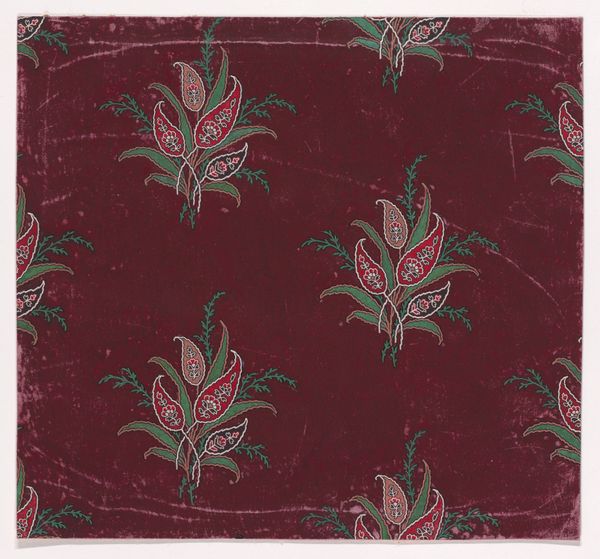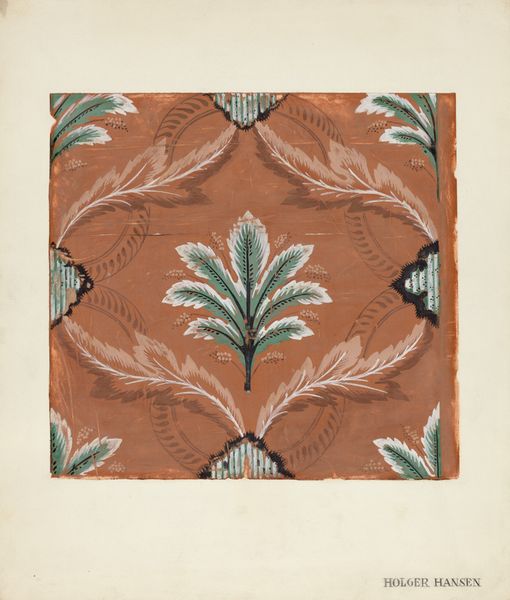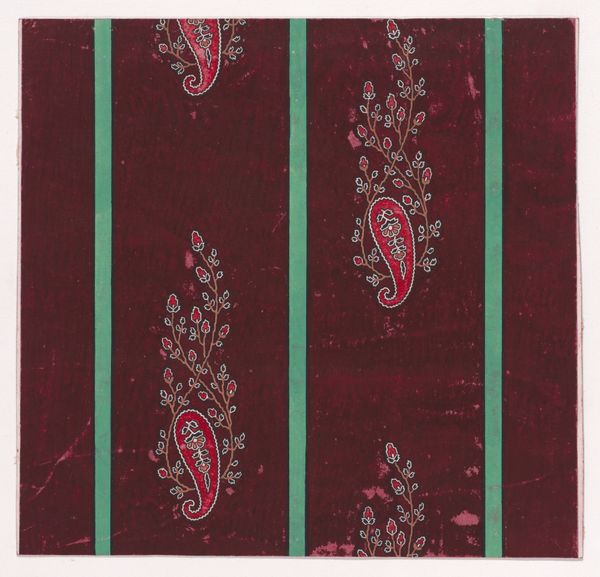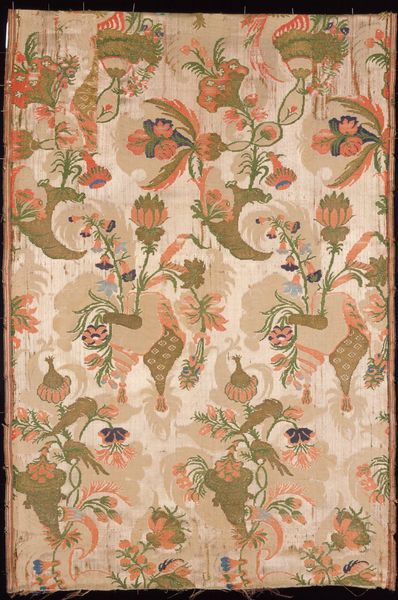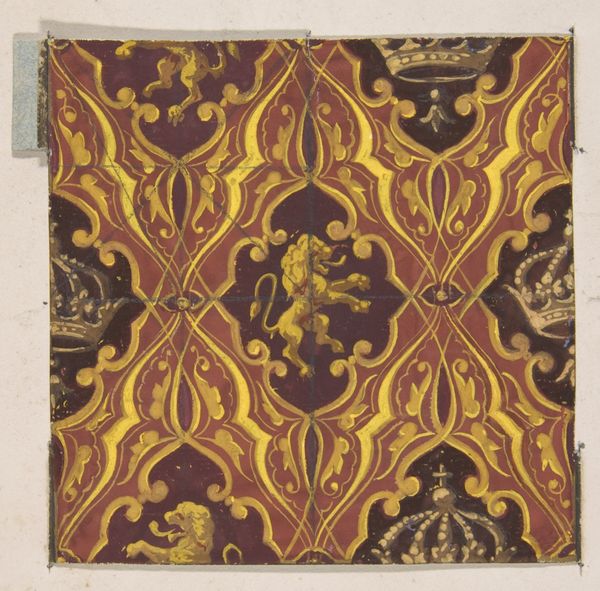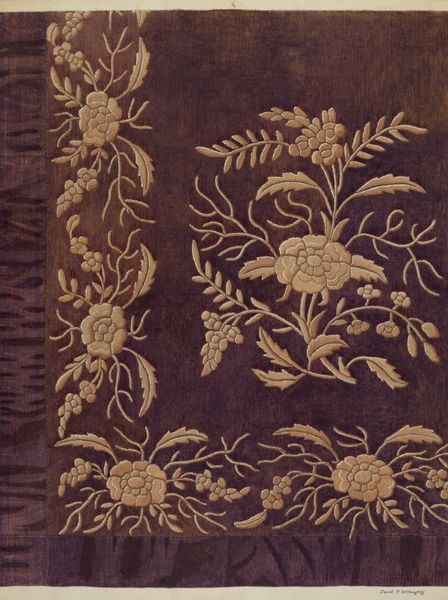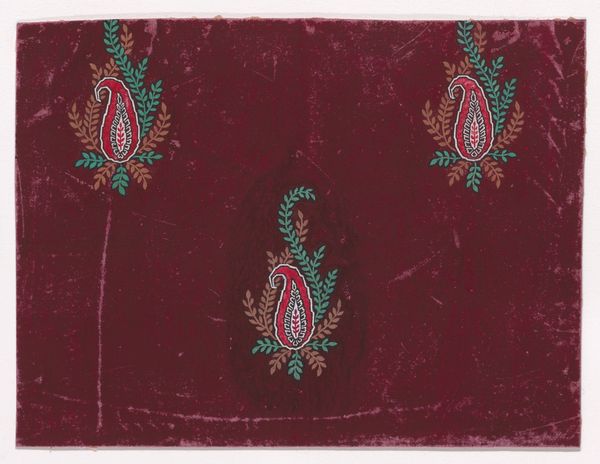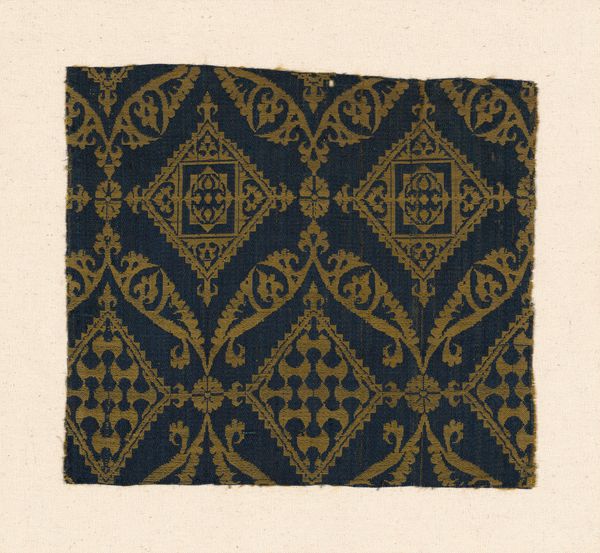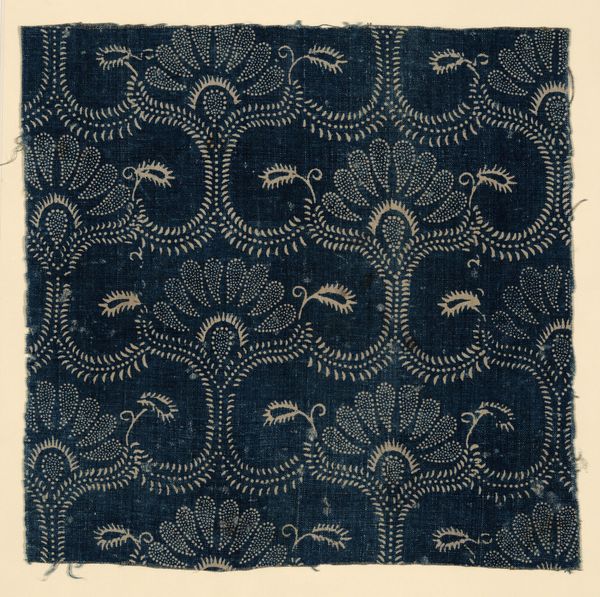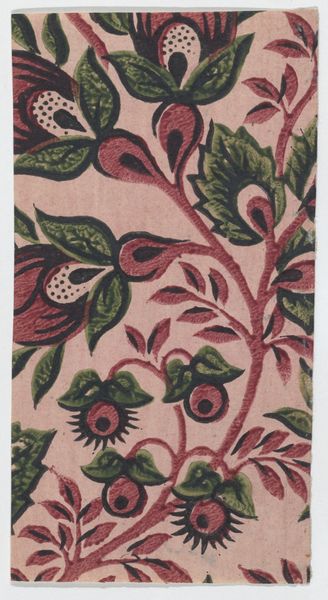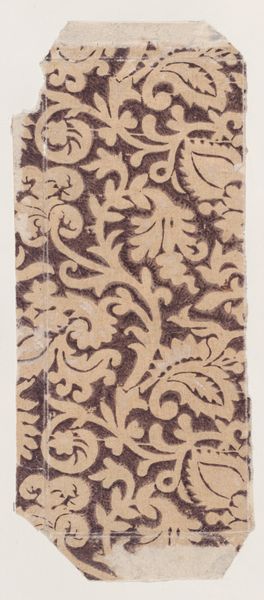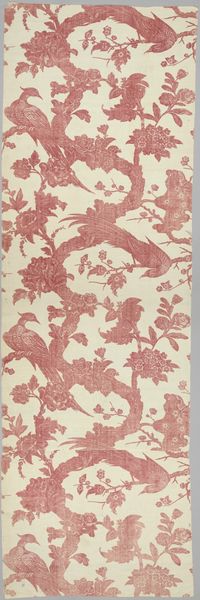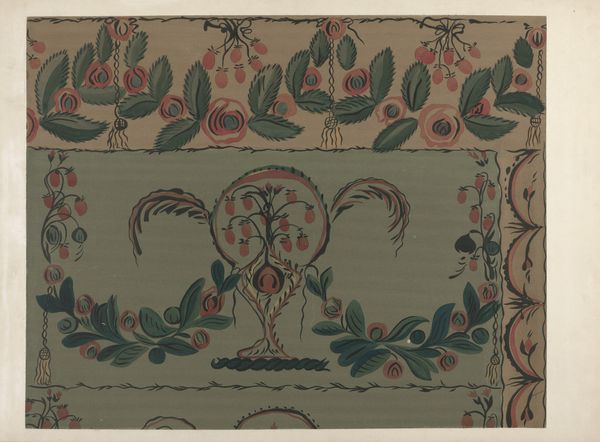
Textile Design with Alternating Rows of Bunches of Scrolling Branches with Stylized Leaves and a Paisley Motif 1840
0:00
0:00
drawing, textile
#
drawing
#
organic
#
textile
#
organic pattern
Dimensions: Sheet: 6 5/16 × 6 7/16 in. (16.1 × 16.4 cm)
Copyright: Public Domain
Curator: What strikes me immediately is the visual harmony created by the repetition of the paisley motif, like an organic algorithm defining a unique material language. Editor: Indeed, the interplay of forms is captivating. This textile design, created around 1840 by an anonymous artist, features alternating rows of scrolling branches interspersed with these very distinctive stylized leaves and paisley shapes. You can find it at the Metropolitan Museum of Art. Curator: The color choices definitely place it in the Victorian era, don't they? That maroon background speaks volumes about class and commodity. It sets off the muted reds, greens, and creams of the pattern in ways that make me think of restrictive gender roles, of wealth inequality that commodifies artistic labour, even in something as seemingly innocuous as a textile design. Who benefitted from this? Whose labor was exploited to make it possible? Editor: Well, shifting to its formal qualities, observe how the symmetrical arrangement offers a comforting regularity, even while the slight variations in the floral details prevent monotony. It dances on the edge of rigid structure and gentle divergence. Semiotics would suggest the paisley itself functions as an almost universally recognizable signifier of textile design, here elegantly rendered. Curator: Beyond aesthetics, consider that the adoption of the paisley motif into Western design in this era involved a process of cultural appropriation linked to colonial trade networks, where artistic patterns were lifted and adapted with little to no acknowledgement of their original cultural context. It’s fascinating how something that seems merely decorative carries a narrative of power dynamics. Editor: And even with that narrative backdrop, we can appreciate the delicate linework visible within each paisley, that interior filigree...a demonstration of visual artistry divorced from these issues of appropriation you’re mentioning. This fine detail contributes to the overall refinement of the design. The formal echoes across the design generate unity as well. Curator: Absolutely. Analyzing it solely as aesthetic misses the layers of historical context it embodies. Looking at a pattern in isolation can never give us a holistic experience of this era or artwork. Editor: Perhaps the true synthesis lies in embracing both: dissecting its visual components, as we did with the repeated motifs and structural logic, while interrogating its historical situation. This, in my opinion, produces a fuller understanding of the anonymous artist's intent and lasting influence of designs from this time.
Comments
No comments
Be the first to comment and join the conversation on the ultimate creative platform.
